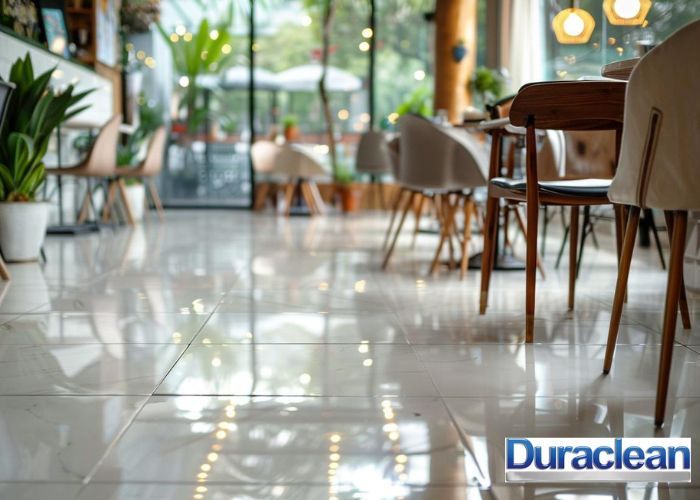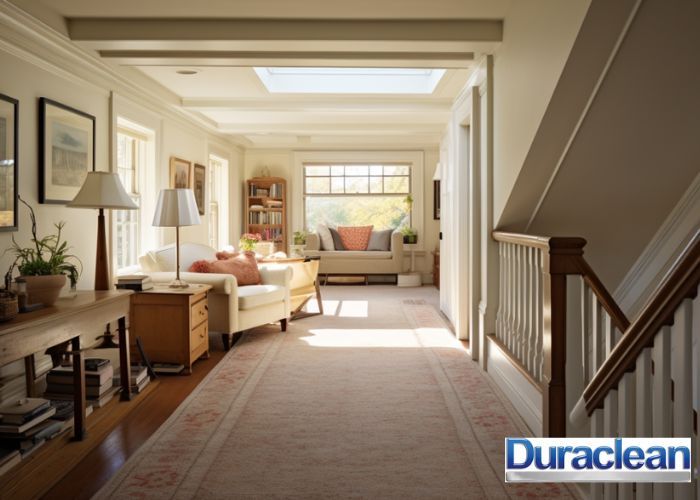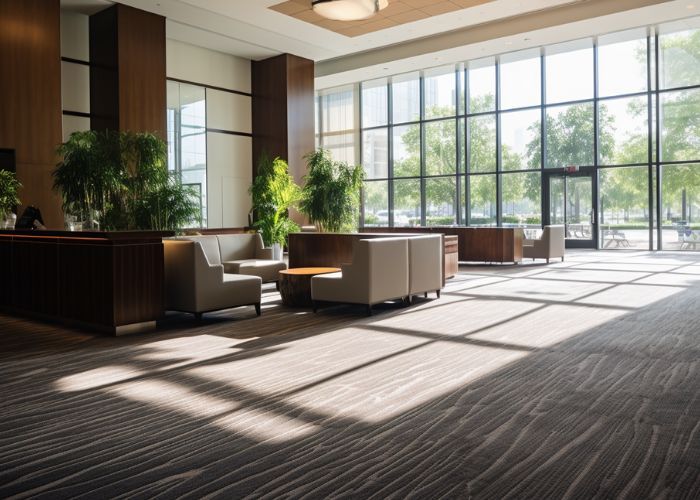
Wood Floors 101: From Daily Dusting to Deep Cleaning
Wood flooring can add a timeless beauty and elegance to any home. However, knowing how to care for your wood floors can be a daunting task. This guide offers an introduction to understanding the basics of wood floor care, detailing the daily regimen essential for dust and dirt management, when and how to deep clean your wood floors and post-cleaning best practices for protecting your wood.
Understanding the Basics of Wood Floor Care
Wood floor care is essential for preserving the beautiful, natural appearance of wooden floors for years to come. Furthermore, understanding the basics of wood floor care is crucial to keeping floors looking their best.
The most important part of wood floor care is the daily cleaning routine. Sweeping or dusting regularly keeps the surface free of dirt and debris that could damage the wood. Vacuuming wood floors with a soft-bristled attachment should be done weekly to reduce the amount of grit and dirt that can scratch the surface. Regular cleaning will also protect the finish on the floor, which helps to preserve its lifespan.
Moreover, wood floors should be mopped regularly with a damp cloth and/or mop. It is important to use a safe cleaning solution specifically designed for wood floors; if a custom solution is not available, a mixture of white vinegar and water can be used. The combination of water and vinegar creates a safe and effective cleaning agent that will not damage the wood. Nevertheless, it is important to avoid letting any excess water sit on the floor, as this can cause warping and discoloration.
In addition to regular cleaning, wood floors should also be treated with a wood floor wax or sealant every few months. This will help to fill in any small scratches and help to protect the wood floor from water damage or dirt buildup. Furthermore, applying a wood floor sealant will help to keep the floor looking its best for years to come.
On the other hand, it is important to note that wood floors should never be stripped, sanded, or refinished without the help of a professional. Doing so on one’s own can cause irreversible damage to the surface of the floor.
Similarly, it is important to be mindful of furniture and other items placed on the wood floor. Place furniture protectors or felt pads under any furniture that may be moved regularly, as this will reduce the amount of scratches and gouges caused from movement.
In conclusion, understanding the basics of wood floor care is a key component to preserving the beautiful look of one’s wood floors for years to come. It is important to sweep and vacuum regularly, mop with a safe cleaning agent, and use a floor wax of sealant to keep the floor looking its best. It is equally important to be mindful of furniture and other items on the floor and not attempt to sand, strip, or refinish the floor without help from a professional.
The Daily Regimen: Essential Steps for Dust and Dirt Management of Your Wood Floors
Daily maintenance includes sweeping, vacuuming, and dusting to help ensure your floors stay beautiful. Sweeping and vacuuming are necessary to help remove dirt and dust on a regular basis. Mopping can also be incorporated to help to remove more difficult spots, scuffs, and stains. However, one should be careful when mopping your wood floor, as too much moisture can cause the wood to warp or become discolored.
Moreover, to keep dirt and dust particles from settling into the coat of the wood floor, a microfiber dust mop can be used to capture and lock in the dust and dirt before it adheres. This helps protect your floor and reduces the risk of scratches and damage. The frequency of sweeping and vacuuming should depend on the amount of traffic the floor is getting, but a dust mop should be used floor at least two to three times a week.
On the other hand, it is important to protect your wood floor from the buildup of dust and dirt. Homeowners can do this by placing floor mats or rugs in entryways, hallways, and other high traffic areas to help catch any dirt and debris that may be tracked in. Additionally, actively wiping dirt from footwear and wiping or sweeping away spills and messes as soon as they happen can help reduce the amount of dust and dirt that can accumulate over time.
In addition, wood floors should be buffed and polished every six to 12 months to preserve the beauty of the wood and extend the life of the floor. Additionally, it is important to use the appropriate cleaning supplies when caring for wood floors, as some chemicals can affect the finish of the wood. Using mild soap and warm water should be enough to care for most wood floors, however, it is necessary to confirm with the manufacturer’s instructions regarding recommended cleaning guidelines.
Therefore, following a daily regimen can help maintain the beauty and condition of your wood floors. With minimal effort, you can keep your wood floors free from dust and dirt, and enjoy them for years to come. Furthermore, keeping an eye on the floor may help identify any issues with the wood, such as indications of warping or discoloration, so that any problems can be addressed quickly.
For instance, having a regular maintenance schedule for your wood floors is key to their preservation. Consider adjusting the schedule as needed during seasons with higher foot traffic or when hosting lots of visitors. Regularly vacuuming, dusting, wiping spills, and gently mopping is the best way to preserve your wood floors. As a result, it is important to take care and caution when caring for a wood floor.
Consequently, taking the necessary steps help ensure that your wood floor stays beautiful and serves as a beautiful addition to any home décor. While it may initially seem intimidating, following the essential steps outlined above can make it a simple and easy process.
Deep Cleaning: When and How to Clean your Hardwood Floors
Deep cleaning hardwood floors is essential to keeping the floor looking beautiful and damage free, and it should be done at least once a year. However, it’s important to know when and how to properly clean the floors. Before deep cleaning, hardwood floors need to be swept to remove all debris. Then they can be vacuumed using the hard floor setting. This will remove all of the dust and dirt from the floor before any liquids are used.
In addition, it’s important to use the right cleaning materials. Hardwood floors should be cleaned with a combination of a gentle cleaner like white vinegar and warm water. To prepare the solution, mix one part vinegar in four parts warm water and pour the mixture into a bucket. The bucket should then be taken to a nearby sink and filled while wetting a sponge mop.
On the other hand, when deep cleaning the floors, it’s important to wring out the mop to ensure the floors aren’t soaked. The liquid in the bucket should be cleaned after each stroke of the mop for even cleaning. To avoid spots, the mop should be run along the grain of the floor. When finished, the floors should be dried with a lint-free cloth and raise the humidity to 50 percent to maintain the hardwood’s shine.
Furthermore, regular deep cleaning should be done without harsh ingredients like oil soap and wax, because they leave behind a waxy buildup that can diminish the hardwood’s shine or discolor the floor. For instance, eighteen inches of hardwood should be cleaned and rinsed with fresh water at least once a year. A neutral-pH cleaner can be used to clean laminate, waxed, petroleum-soaked, or untreated hardwood floors.
Consequently, deep cleaning hardwood floors can maintain the beauty of the floor for a longer period of time. Taking the time to deep clean the floors the right way ensures that they stay in great condition and are less subjected to wear and tear.
Finally, it’s important to note that hardwood floors should never be extremely wet, or the wood can expand and cause the boards to swell or warping. Deep cleaning should only be done to clean up deep layers of dirt or stubborn spots that can’t be removed by regular cleaning. Doing this monthly will ensure that hardwood floors stay in great condition.
Dive Deeper Protecting Your Wood: Post-Cleaning Best Practices
After the wooden surface has been thoroughly cleaned, there are a few steps one can take to protect the material that will maintain its appearance. However, it is important to recognize the type of wood that is being treated and the environment it is located in to determine the best products to use for protection.
In addition, different types of wood have different protective needs. For example, a surface that is exposed to direct sunlight or rain would require more waterproof protection than one that is indoors. Similarly, different densities of wood, such as soft or hardwood, have different levels of protection. Consequently, the type of product that is chosen for protection purposes should match the needs of the type of wood in question.
For indoor settings with normal usage, a natural or artificial wax is often applied. The wax helps protect the wood from scratches, dirt, and water. Moreover, as wood ages it begins to lose humidity, resulting in a harder or drier surface. Applying a wax along with oil treatments can prevent the wood from drying out and cracking due to this lack of humidity. However, many wood experts do not recommend wax if the surface will be subjected to a lot of moisture.
In contrast, when it comes to outdoor settings, using an oil-based sealant product is often the best choice. For instance, an oil-based sealant helps support the wood and increase its water-resistance properties. Furthermore, it will keep the wood from expanding and contracting due to changes in temperature and humidity, adding an extra layer of protection.
Though the best way to protect any wooden surface will ultimately depend on its specific location, all wood will benefit from a protective layer, whether it is wax or sealant. As a result, one should always consider the type of wood and the environment it is located in when determining the most suitable protective measures against moisture and wear.
Final Thoughts
The primary purpose of hardwood floor care is to ensure that your floor stays in good condition and looks great. The first step in protecting your hardwood floors is to use a dust mop or vacuum. Keeping your wood floors free of surface dirt and dust should be part of your daily regimen to avoid having to deep clean later. When it comes to deep cleaning your hardwood floors, use pH neutral cleaners and warm water. There are also some additional techniques, such as pre-treating spills or using mats to help keep your floor protected. Finally, post-cleaning, it’s recommended to avoid wax, oils, and polishes, as they can be damaging, instead use sealers or polyurethane sealers to help prevent against scratches and dust buildup. Overall, taking the time to dust and vacuum often, as well deep clean your hardwood floors appropriately will help ensure the longevity of your timber flooring.
Frequently Asked Questions
What types of cleaners are safe to use on wood floors?
When cleaning wood floors, it’s best to use mild cleaners that are specifically formulated for hardwood floors. These can usually be found at any hardware store or home improvements store. White vinegar mixed with hot water makes a great DIY wood floor cleaner, as does a mixture of one part vegetable oil and two parts lemon juice. Be sure to avoid harsh chemicals, abrasives, and wax-based products, which can damage wood.
How often should I deep clean my wood floors?
It is recommended to deep clean your wood floors at least once a year. However, if your floors are subjected to more wear-and-tear than normal, it may be necessary to deep clean them more frequently.
Can I use a regular vacuum on my wood floors?
No, you should not use a regular vacuum on your wood floors. Vacuums can cause scratching and can even ruin the finish. You should use a specially designed hardwood floor vacuum cleaner in order to keep your floors clean and protect them from damage.
Are steam mops suitable for wood floors?
Yes, steam mops can be suitable for wood floors. However, it is important to check the manufacturer’s instructions to ensure that the steam mop is compatible with your particular flooring. You may also want to consider using a gentler cleaning method, such as a damp mop, as steam mops can potentially warp wood floors if used improperly.
Call to Book Your Cleaning
Other Blogs You May Be Interested In
Categories








Leave a Reply